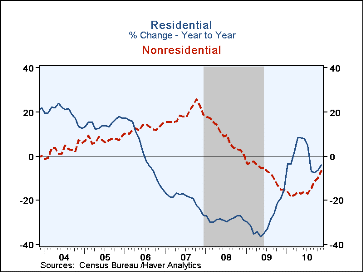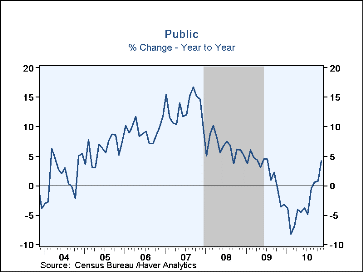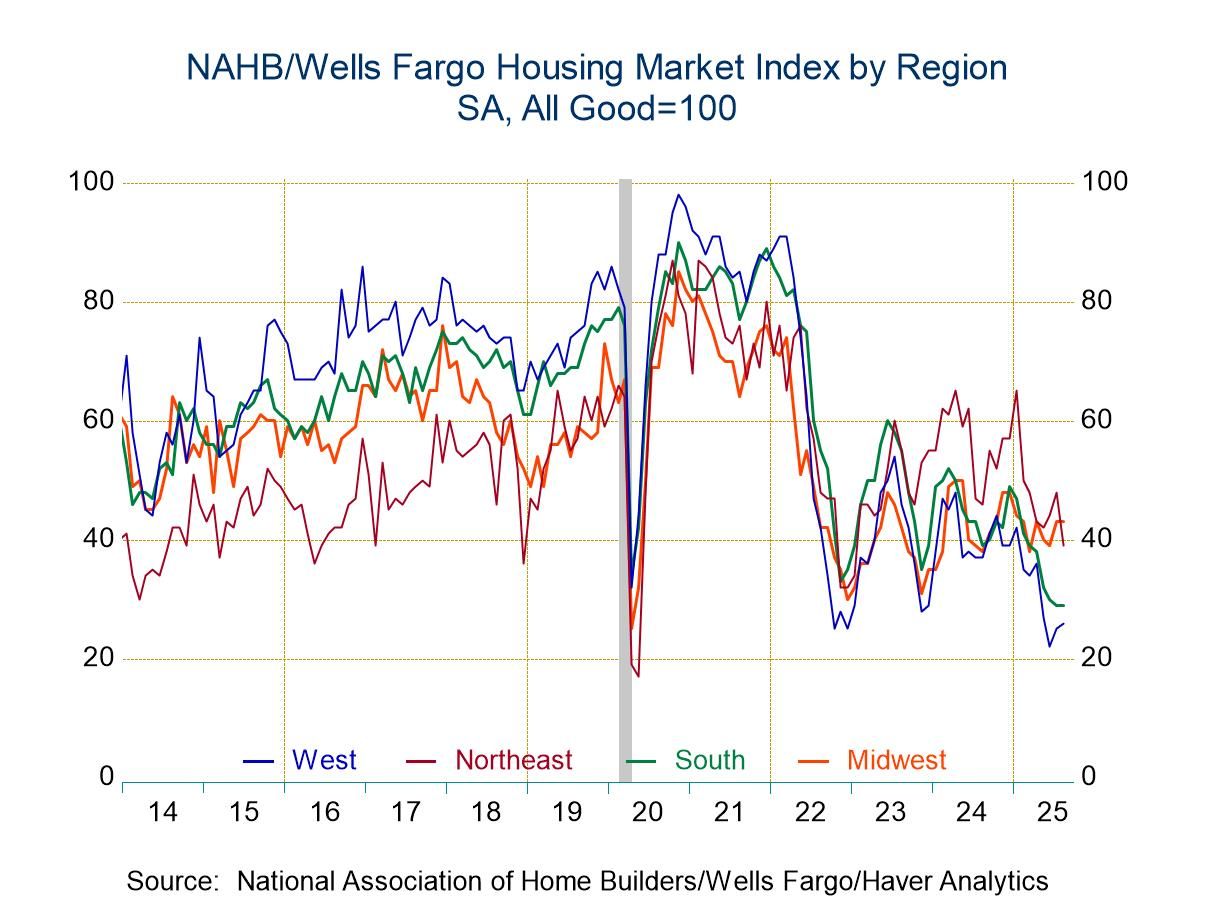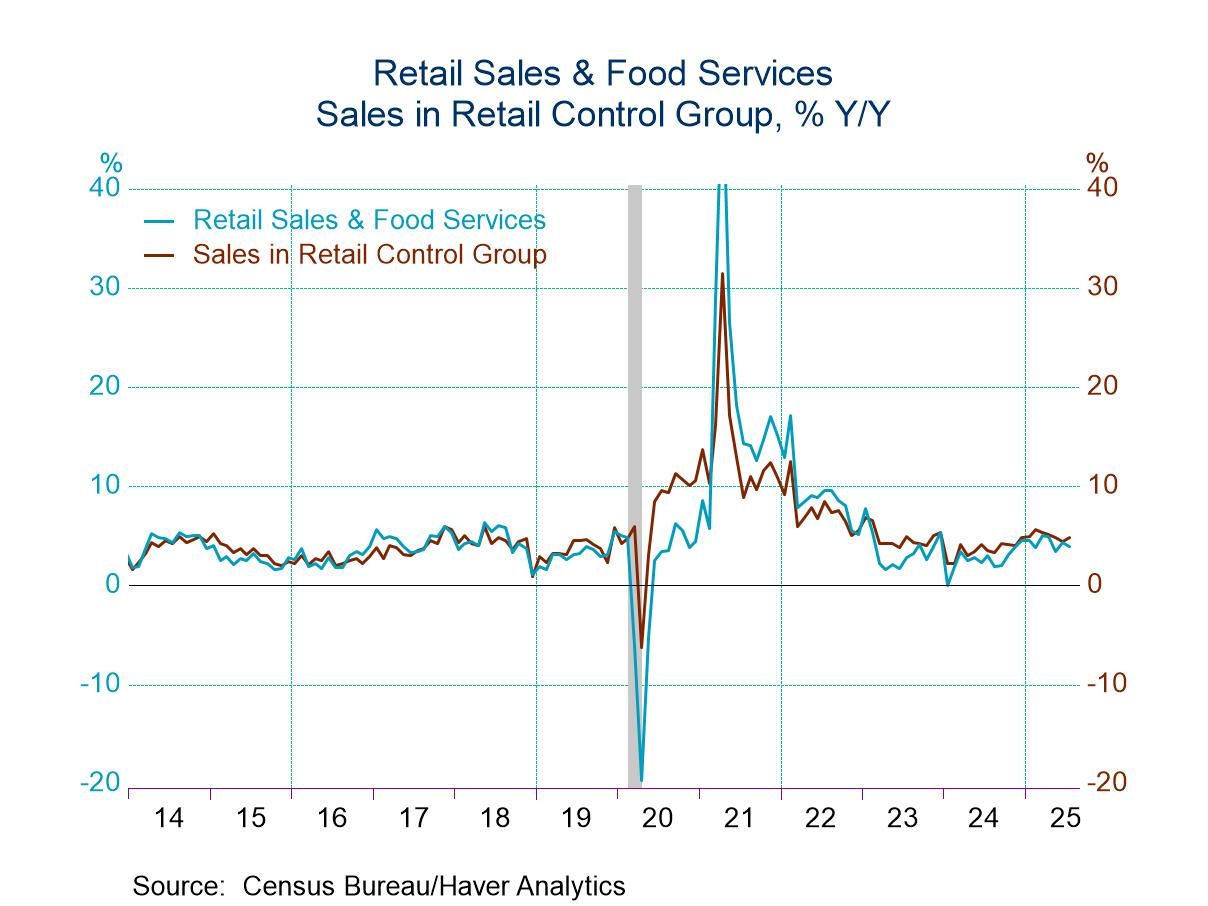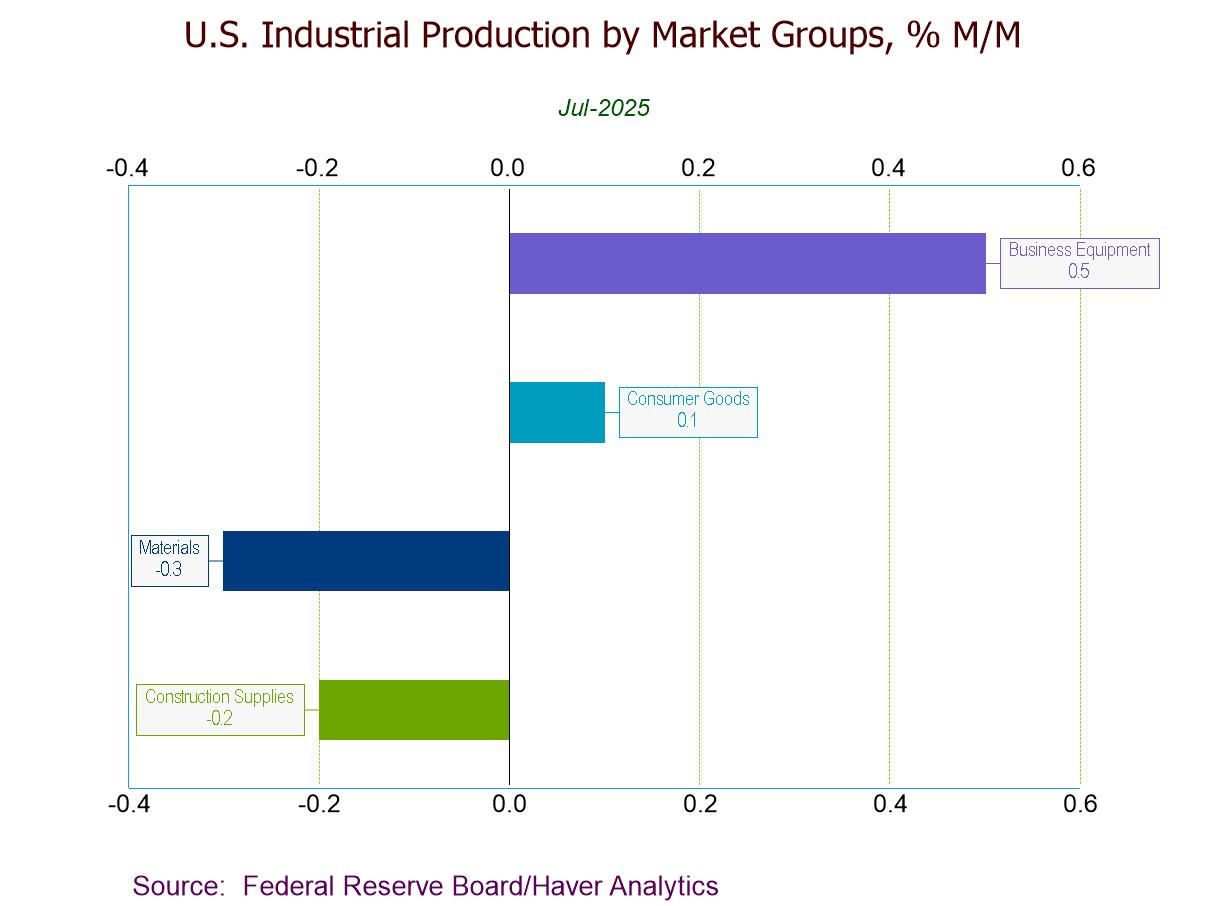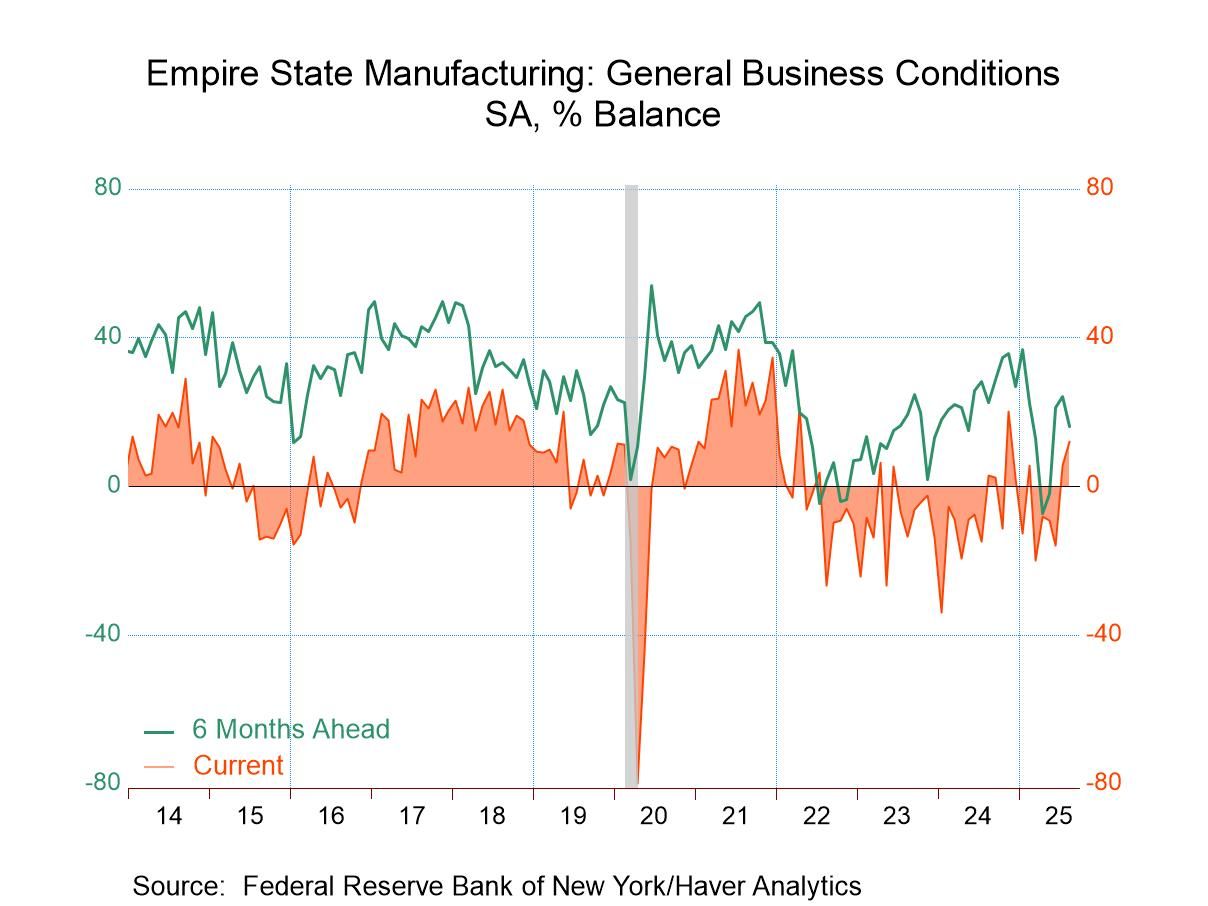 Global| Jan 03 2011
Global| Jan 03 2011U.S. Construction Spending Increases Modestly
by:Tom Moeller
|in:Economy in Brief
Summary
Moderate weather may have played a part in its increase. Nevertheless, the value of construction put-in-place rose 0.4% during November following an unrevised 0.7% October gain. The latest figure essentially matched Consensus [...]
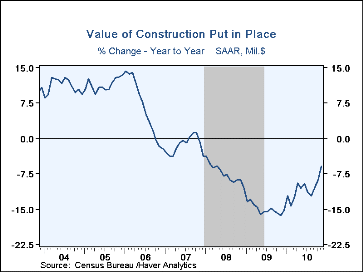 Moderate weather may have played a part in its increase. Nevertheless, the
value of construction put-in-place rose 0.4% during November following an
unrevised 0.7% October gain. The latest figure essentially matched Consensus
expectations for a 0.2% uptick. To the upside was residential building
activity which increased 0.7% in November following a 3.9% spurt during October.
Higher multi-family building led the increase with a 3.0% jump but it remained
off by one-third from last year. Single-family building rose a modest 0.6%
(-3.0% y/y) while spending on improvements ticked up 0.4% (-3.4% y/y).
Moderate weather may have played a part in its increase. Nevertheless, the
value of construction put-in-place rose 0.4% during November following an
unrevised 0.7% October gain. The latest figure essentially matched Consensus
expectations for a 0.2% uptick. To the upside was residential building
activity which increased 0.7% in November following a 3.9% spurt during October.
Higher multi-family building led the increase with a 3.0% jump but it remained
off by one-third from last year. Single-family building rose a modest 0.6%
(-3.0% y/y) while spending on improvements ticked up 0.4% (-3.4% y/y).
Nonresidential building slipped another -0.1% after a 0.7% October decline. The y/y decline moderated further to 16.5% as building in the transportation sector slipped just 0.4% y/y. Highways & streets (+6.8% y/y) and power (+1.4% y/y) along with other infrastructure building remained strong. Commercial building fell 15.0% y/y accompanied by a one-quarter y/y drop in office building. Hurt by lower tax revenues, educational building was off one-third from its late-2008 peak and health care building was down 6.0% y/y.
Public construction activity rose 0.7% during November and a greatly improved 4.2% y/y. Power facilities building grew by one-half from last year. Also firm were health care (11.1% y/y), sewerage & waste disposal (7.4% y/y), water supply (2.8% y/y) and highways & streets (6.9% y/y). Highway construction amounts to one-quarter of the dollars spent on public sector building. Working the other way were commercial (-15.3% y/y), office (-8.0% y/y), and educational building (-6.7% y/y) where growth was negative.
The construction put-in-place figures are available in Haver's USECON database.
Underwriting on Subprime Mortgages: What Really Happened? from the Federal Reserve Bank of St. Louis can be found here.
| Construction Put in Place(%) | Nov | Oct | Sept | Y/Y | 2009 | 2008 | 2007 |
|---|---|---|---|---|---|---|---|
| Total | 0.4 | 0.7 | 1.2 | -6.0 | -14.9 | -7.5 | -1.4 |
| Private | 0.3 | 1.4 | 1.6 | -11.5 | -21.9 | -12.2 | -5.5 |
| Residential | 0.7 | 3.9 | 1.2 | -5.3 | -29.9 | -29.0 | -19.7 |
| Nonresidential | -0.1 | -0.7 | 2.0 | -16.5 | -15.0 | 10.5 | 23.9 |
| Public | 0.7 | -0.3 | 0.6 | 4.2 | 2.2 | 6.6 | 13.1 |
Tom Moeller
AuthorMore in Author Profile »Prior to joining Haver Analytics in 2000, Mr. Moeller worked as the Economist at Chancellor Capital Management from 1985 to 1999. There, he developed comprehensive economic forecasts and interpreted economic data for equity and fixed income portfolio managers. Also at Chancellor, Mr. Moeller worked as an equity analyst and was responsible for researching and rating companies in the economically sensitive automobile and housing industries for investment in Chancellor’s equity portfolio. Prior to joining Chancellor, Mr. Moeller was an Economist at Citibank from 1979 to 1984. He also analyzed pricing behavior in the metals industry for the Council on Wage and Price Stability in Washington, D.C. In 1999, Mr. Moeller received the award for most accurate forecast from the Forecasters' Club of New York. From 1990 to 1992 he was President of the New York Association for Business Economists. Mr. Moeller earned an M.B.A. in Finance from Fordham University, where he graduated in 1987. He holds a Bachelor of Arts in Economics from George Washington University.


